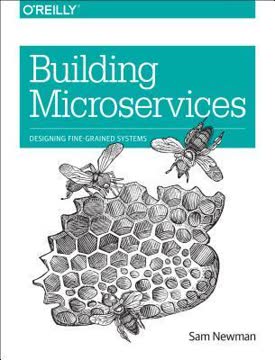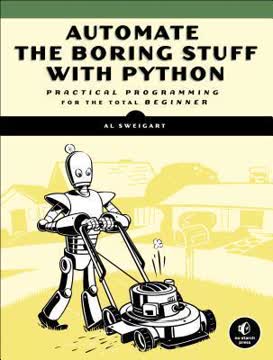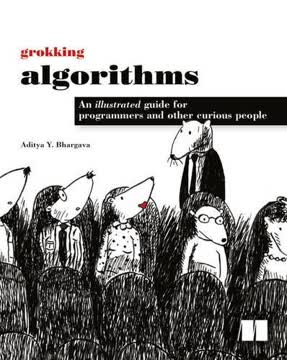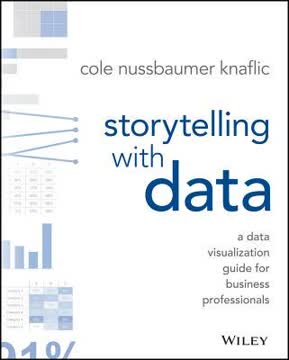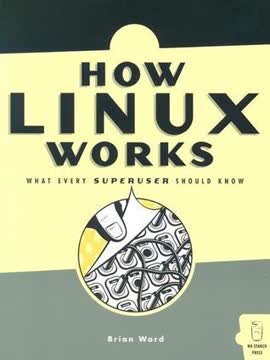نکات کلیدی
1. اصول SQL: جداول، پرسوجوها و دستکاری دادهها
یک پایگاه داده چیزی جز مجموعهای از اطلاعات مرتبط نیست.
جداول پایه را تشکیل میدهند. در پایگاههای داده رابطهای، دادهها به صورت جداولی سازماندهی میشوند که شامل سطرها و ستونها هستند. هر جدول نمایانگر یک موجودیت (مانند مشتریان، سفارشات) است که ستونها ویژگیها را تعریف میکنند و سطرها شامل رکوردهای فردی هستند.
عملیات CRUD. SQL چهار عملیات اساسی برای تعامل با دادهها ارائه میدهد:
- CREATE: وارد کردن رکوردهای جدید به جداول
- READ: بازیابی دادهها با استفاده از دستورات SELECT
- UPDATE: اصلاح رکوردهای موجود
- DELETE: حذف رکوردها از جداول
ساختار پرسوجو. یک پرسوجوی معمولی SQL شامل موارد زیر است:
- SELECT: مشخص میکند کدام ستونها بازیابی شوند
- FROM: منبع جدول(ها) را شناسایی میکند
- WHERE: سطرها را بر اساس شرایط فیلتر میکند
- ORDER BY: مجموعه نتایج را مرتب میکند
2. اتصال جداول: باز کردن روابط در پایگاههای داده رابطهای
نقش ایندکسها تسهیل بازیابی زیرمجموعهای از سطرها و ستونهای یک جدول بدون نیاز به بررسی هر سطر در جدول است.
انواع اتصالها. SQL چندین روش برای ترکیب دادهها از جداول مختلف ارائه میدهد:
- INNER JOIN: فقط سطرهای مطابق از هر دو جدول را برمیگرداند
- LEFT/RIGHT OUTER JOIN: شامل تمام سطرها از یک جدول، حتی بدون تطابق
- FULL OUTER JOIN: شامل تمام سطرها از هر دو جدول
- CROSS JOIN: تمام ترکیبهای ممکن (ضرب دکارتی) را تولید میکند
شرایط اتصال. عبارت ON مشخص میکند که جداول چگونه به هم مرتبط هستند، معمولاً با استفاده از روابط کلید اصلی و خارجی. برای مثال:
sql
SELECT customers.name, orders.order_date
FROM customers
INNER JOIN orders ON customers.id = orders.customer_id
اتصال جداول متعدد. پرسوجوهای پیچیده اغلب شامل اتصال سه یا چند جدول برای جمعآوری اطلاعات مرتبط از سراسر طرح پایگاه داده هستند.
3. فیلتر کردن و گروهبندی دادهها: پالایش نتایج پرسوجو
یک عبارت where ممکن است شامل یک یا چند شرط باشد که با عملگرهای and و or جدا شدهاند.
قدرت عبارت WHERE. فیلتر کردن به شما امکان میدهد فقط دادههای مورد نیاز خود را بازیابی کنید:
- عملگرهای مقایسه: =, <>, <, >, BETWEEN, IN, LIKE
- عملگرهای منطقی: AND, OR, NOT
- تطابق الگو: با استفاده از کاراکترهای جایگزین (% و _) با LIKE
توابع تجمعی. SQL توابعی برای خلاصهسازی دادهها ارائه میدهد:
- COUNT(): تعداد سطرها
- SUM(): مجموع مقادیر عددی
- AVG(): میانگین مقادیر عددی
- MIN()/MAX(): کوچکترین/بزرگترین مقادیر
GROUP BY و HAVING. این عبارات امکان تحلیل زیرمجموعههای داده را فراهم میکنند:
- GROUP BY: سطرها را بر اساس مقادیر ستونها به گروهها سازماندهی میکند
- HAVING: گروهها را فیلتر میکند (مشابه WHERE، اما برای دادههای گروهبندی شده)
4. زیرپرسوجوها: قدرت تو در تو برای بازیابی دادههای پیچیده
یک زیرپرسوجو، پرسوجویی است که درون یک عبارت SQL دیگر قرار دارد (که در ادامه به آن عبارت حاوی میگویم).
انواع زیرپرسوجوها:
- اسکالر: یک مقدار واحد را برمیگرداند
- ستون: یک ستون از چندین سطر را برمیگرداند
- سطر: یک سطر از چندین ستون را برمیگرداند
- جدول: چندین ستون و سطر را برمیگرداند
مکانهای زیرپرسوجو:
- SELECT: برای ستونهای محاسبهشده
- FROM: به عنوان جداول مشتقشده
- WHERE: برای فیلتر کردن پویا
- HAVING: برای فیلتر کردن نتایج گروهبندی شده
زیرپرسوجوهای همبسته. اینها به ستونهای پرسوجوی بیرونی ارجاع میدهند و امکان پردازش سطر به سطر را فراهم میکنند. در حالی که قدرتمند هستند، میتوانند بر عملکرد مجموعه دادههای بزرگ تأثیر بگذارند.
5. SQL پیشرفته: نماها، تراکنشها و متاداده
نماها به دلایل مختلفی ایجاد میشوند، از جمله برای پنهان کردن ستونها از کاربران و سادهسازی طراحیهای پیچیده پایگاه داده.
نماها. جداول مجازی بر اساس دستورات SELECT:
- سادهسازی پرسوجوهای پیچیده
- ارائه امنیت داده با محدود کردن دسترسی
- ارائه رابطهای ثابت به عنوان طرحها تکامل مییابند
تراکنشها. اطمینان از یکپارچگی دادهها برای عملیات چند مرحلهای:
- BEGIN: شروع یک تراکنش
- COMMIT: ذخیره دائمی تغییرات
- ROLLBACK: لغو تغییرات در صورت بروز خطا
متاداده. اطلاعات درباره ساختار پایگاه داده:
- فرهنگ داده: ذخیره تعاریف اشیاء پایگاه داده
- طرح اطلاعات: روش استاندارد برای دسترسی به متاداده
- کاتالوگهای سیستم: جداول متاداده خاص پایگاه داده
6. ایندکسگذاری و محدودیتها: بهینهسازی عملکرد پایگاه داده
ایندکسها مکانیزمی هستند که سرور پایگاه داده برای کنترل استفاده همزمان از منابع داده استفاده میکند.
ایندکسها. بهبود عملکرد پرسوجو:
- B-tree: ساختار درخت متوازن، مناسب برای اکثر انواع داده
- Bitmap: کارآمد برای ستونهایی با کاردینالیتی پایین
- Full-text: بهینهسازی شده برای جستجوی اسناد متنی
محدودیتها. اعمال قوانین یکپارچگی داده:
- کلید اصلی: اطمینان از شناسایی یکتای سطرها
- کلید خارجی: حفظ یکپارچگی ارجاعی بین جداول
- یکتا: جلوگیری از مقادیر تکراری در یک ستون
- بررسی: اعمال شرایط خاص بر روی مقادیر ستون
بهینهسازی پرسوجو. تکنیکهایی برای بهبود عملکرد:
- تحلیل برنامههای اجرایی
- استفاده از ایندکسهای مناسب
- اجتناب از اسکن کامل جدول در صورت امکان
- بهینهسازی عملیات JOIN
7. تحلیل با SQL: توابع پنجره برای بینشهای داده
با استفاده از توابع تحلیلی، میتوانید همه این کارها و بیشتر را انجام دهید.
توابع پنجره. انجام محاسبات بر روی مجموعهای از سطرها:
- عبارت OVER: تعریف پنجرهای از سطرها برای عملیات
- PARTITION BY: گروهبندی سطرها برای تحلیل
- ORDER BY: تعیین ترتیب سطرها درون پارتیشنها
توابع رتبهبندی:
- ROW_NUMBER(): اختصاص شمارههای یکتا به سطرها
- RANK(): اختصاص رتبهها با فاصله برای تساویها
- DENSE_RANK(): اختصاص رتبهها بدون فاصله
توابع تجمعی پنجره:
- SUM(), AVG(), COUNT() بر روی پنجرهها
- مجموعهای جاری و میانگینهای متحرک
توابع جابجایی:
- LAG(): دسترسی به داده از سطرهای قبلی
- LEAD(): دسترسی به داده از سطرهای بعدی
آخرین بهروزرسانی::
FAQ
1. What is "Learning SQL" by Alan Beaulieu about?
- Comprehensive SQL introduction: "Learning SQL" by Alan Beaulieu is a practical guide to understanding and using SQL for generating, manipulating, and retrieving data from relational databases.
- Focus on programming features: The book emphasizes SQL data statements (SELECT, INSERT, UPDATE, DELETE) and programming features over just schema creation.
- Relational database fundamentals: It introduces key concepts like normalization, keys, joins, and the history of relational databases to provide a strong foundation.
- Portable, real-world examples: Examples use the Sakila sample database and MySQL, but the SQL taught is applicable across major database systems like Oracle, SQL Server, and DB2.
2. Why should I read "Learning SQL" by Alan Beaulieu?
- Build a solid SQL foundation: The book is suitable for beginners and intermediate users, starting with essential concepts and progressing to advanced topics.
- Practical, real-world techniques: It emphasizes hands-on usage of SQL features, ensuring readers can write efficient and maintainable queries for real applications.
- Prepare for modern data challenges: Coverage includes working with large databases, partitioning, and integrating SQL with big data tools, making it relevant for evolving data environments.
- Understand data structures: Learning SQL helps readers understand underlying data structures, enabling them to suggest improvements and optimize database design.
3. What are the key takeaways from "Learning SQL" by Alan Beaulieu?
- Mastery of SQL basics and beyond: Readers gain a thorough understanding of SQL queries, joins, subqueries, grouping, aggregate functions, and conditional logic.
- Advanced SQL features: The book covers transactions, indexes, views, analytic functions, and metadata querying, preparing readers for complex database programming.
- Emphasis on portability and best practices: SQL examples are designed to be portable across different database systems, and the book advocates for clear, modern SQL syntax.
- Practical application focus: Real-world examples and exercises using the Sakila database ensure concepts are immediately applicable.
4. What are the main components of an SQL query as explained in "Learning SQL" by Alan Beaulieu?
- SELECT clause: Specifies which columns or expressions to include in the result set, supporting literals, expressions, and functions.
- FROM clause: Identifies the tables or derived tables involved, supporting joins, subqueries, temporary tables, and views.
- WHERE clause: Filters rows based on specified conditions, with additional clauses like GROUP BY (grouping), HAVING (group filtering), and ORDER BY (sorting).
- Logical query structure: The book explains the logical order of SQL query processing, helping readers write more effective and efficient queries.
5. How does "Learning SQL" by Alan Beaulieu explain joins and their importance?
- Joining multiple tables: Joins combine data from two or more tables based on related columns, typically using foreign keys.
- Types of joins: The book covers inner joins (matching rows), outer joins (LEFT, RIGHT, including unmatched rows), cross joins (Cartesian products), and self-joins (joining a table to itself).
- ANSI join syntax: It advocates for the SQL92 join syntax with explicit JOIN and ON clauses for clarity and portability, discouraging older comma-separated syntax.
- Advanced join concepts: Readers learn about joining three or more tables, using aliases, and the importance of join order and conditions for accurate results.
6. What are aggregate functions and how are they used in "Learning SQL" by Alan Beaulieu?
- Definition and purpose: Aggregate functions perform calculations over groups of rows, such as MAX(), MIN(), AVG(), SUM(), and COUNT().
- Grouping data: The GROUP BY clause is used to apply aggregate functions to specific groups, like summarizing sales by customer.
- Handling NULLs and distinct values: Aggregate functions generally ignore NULLs (except COUNT(*)), and the book explains how to count distinct values with COUNT(DISTINCT column).
- Filtering groups: The HAVING clause allows filtering of groups after aggregation, complementing the WHERE clause which filters rows before grouping.
7. How does "Learning SQL" by Alan Beaulieu explain subqueries and their types?
- Subquery basics: Subqueries are queries nested within another SQL statement, acting as temporary tables with statement scope.
- Noncorrelated vs. correlated: Noncorrelated subqueries run independently, while correlated subqueries reference columns from the outer query and execute per candidate row.
- Operators and usage: The book covers using IN, NOT IN, ALL, ANY, EXISTS, and NOT EXISTS with subqueries for filtering and value generation.
- Practical applications: Subqueries are demonstrated in SELECT, UPDATE, DELETE, and INSERT statements for flexible data manipulation.
8. How does "Learning SQL" by Alan Beaulieu approach conditional logic in SQL?
- CASE expressions: The book emphasizes the SQL-standard CASE expression for implementing if-then-else logic, both in searched and simple forms.
- Data transformation: CASE is used to translate codes, handle NULLs, avoid division-by-zero errors, and perform conditional updates.
- Reporting and pivoting: CASE expressions help pivot data, check for related data existence, and dynamically classify data in reports.
- Enhancing query flexibility: Practical examples show how CASE increases the robustness and adaptability of SQL queries.
9. What does "Learning SQL" by Alan Beaulieu teach about transactions and concurrency?
- Transaction fundamentals: Transactions group multiple SQL statements into atomic units, ensuring all succeed or none do, protecting data integrity.
- Locking and isolation: The book discusses different locking strategies (table, page, row) and versioning approaches for managing concurrent access.
- Transaction control: Readers learn to start, commit, and roll back transactions, handle deadlocks, and use savepoints for partial rollbacks.
- Practical examples: Transaction management is illustrated with real-world scenarios in MySQL and SQL Server.
10. How are indexes and constraints explained in "Learning SQL" by Alan Beaulieu?
- Index types and benefits: The book details B-tree, bitmap, and text indexes, explaining how they speed up data retrieval but may slow down modifications.
- Creating and managing indexes: Instructions are provided for creating single-column, multicolumn, and unique indexes, as well as dropping them.
- Constraints for data integrity: Primary key, foreign key, unique, and check constraints are covered, with explanations of how they enforce referential integrity.
- Foreign key options: The book discusses ON DELETE RESTRICT and ON UPDATE CASCADE to prevent orphaned rows and maintain data consistency.
11. What are views and how does "Learning SQL" by Alan Beaulieu recommend using them?
- Definition and creation: Views are named queries stored in the database, acting as virtual tables without storing data.
- Benefits of views: They provide data security, simplify complex joins, enable pre-aggregated reports, and help manage partitioned data.
- Updatable views: The book explains when views can be updated or inserted into, and the limitations when views include derived columns or multiple tables.
- Alternatives for complex updates: Instead-of triggers are suggested for handling updates on complex views.
12. How does "Learning SQL" by Alan Beaulieu address analytic functions and their applications?
- Analytic function concepts: Analytic functions operate on data windows defined by OVER clauses, enabling calculations like rankings and running totals without collapsing rows.
- Ranking and reporting: Functions like ROW_NUMBER, RANK, and DENSE_RANK are explained for different tie-handling strategies in reports.
- Advanced windowing: The book covers window frames for precise row or value range calculations, and functions like LAG and LEAD for comparing values across rows.
- Sophisticated data analysis: Analytic functions are essential for advanced reporting, trend analysis, and business intelligence tasks.
نقد و بررسی
کتاب یادگیری SQL به خاطر معرفی واضح مبانی SQL، تمرینهای عملی و پوشش چندین سیستم پایگاه داده، نقدهای مثبتی دریافت کرده است. خوانندگان از توضیحات مختصر آن قدردانی میکنند و آن را برای مبتدیان و به عنوان یک refresher مفید میدانند. برخی به کمبود پوشش بهینهسازی پرسوجو و موضوعات پیشرفته محدود انتقاد کردهاند. این کتاب به خاطر قابلیت خواندن و رویکرد ساختاریافتهاش ستایش میشود، هرچند برخی اشاره میکنند که میتواند در برخی زمینهها عمق بیشتری داشته باشد. بهطور کلی، این کتاب منبعی ارزشمند برای کسانی است که به SQL تازهکار هستند یا به دنبال تقویت درک خود از این زبان هستند.
Similar Books


